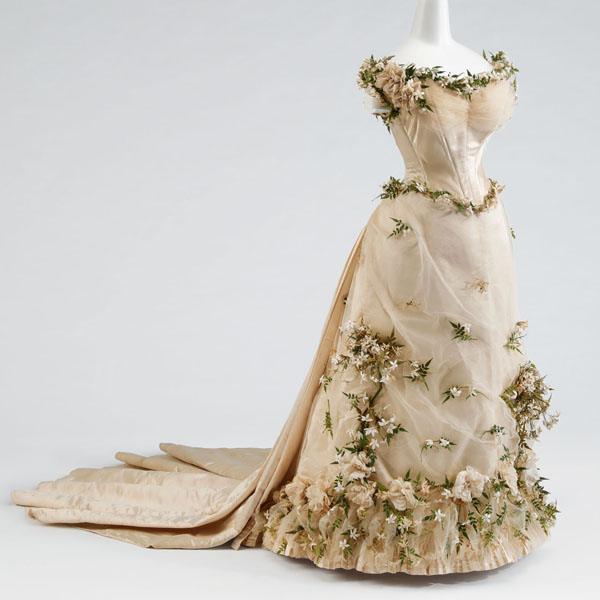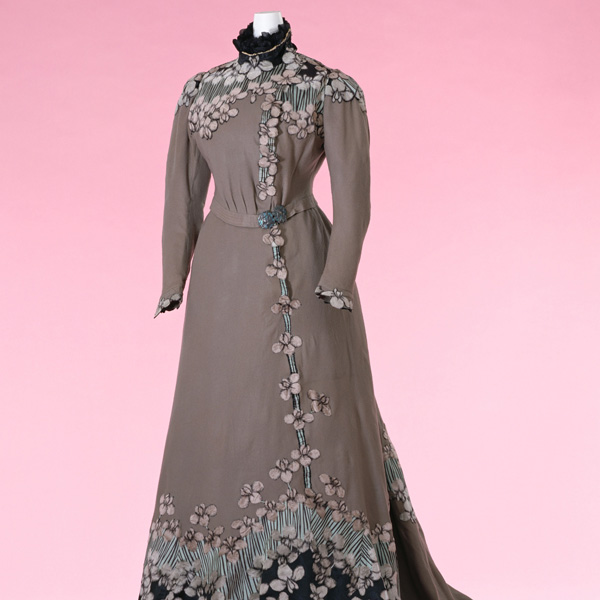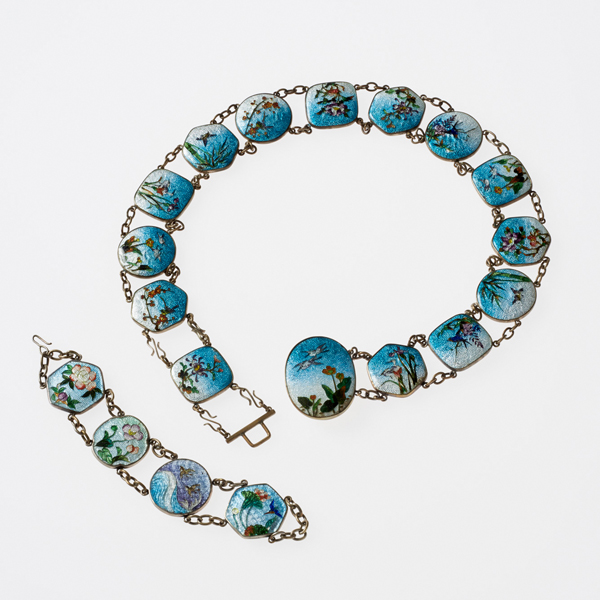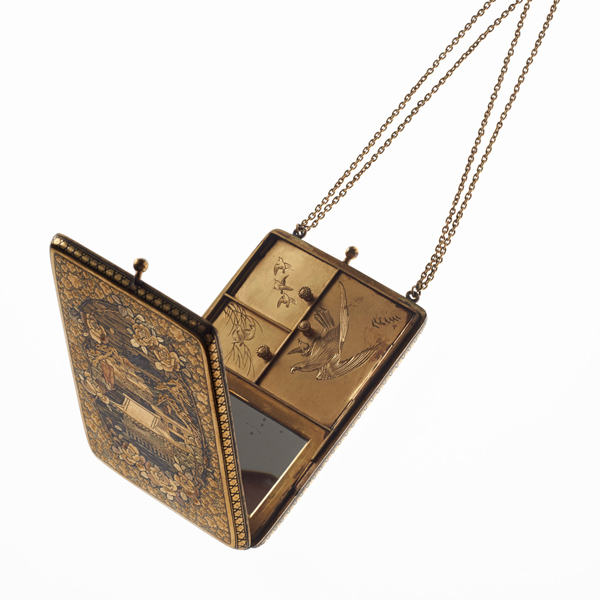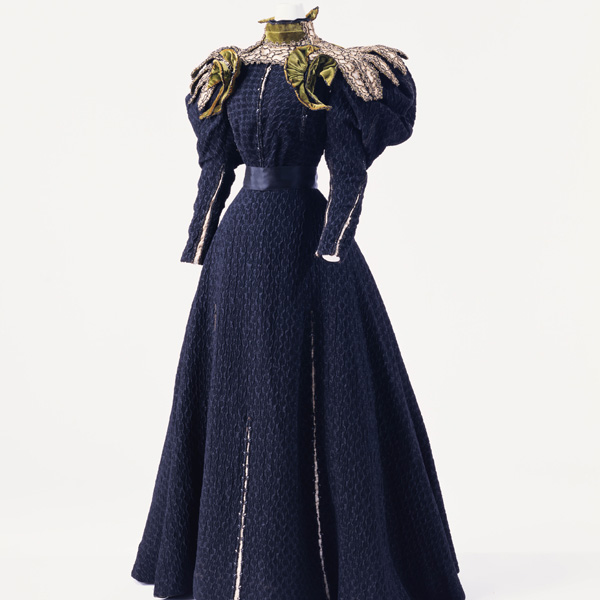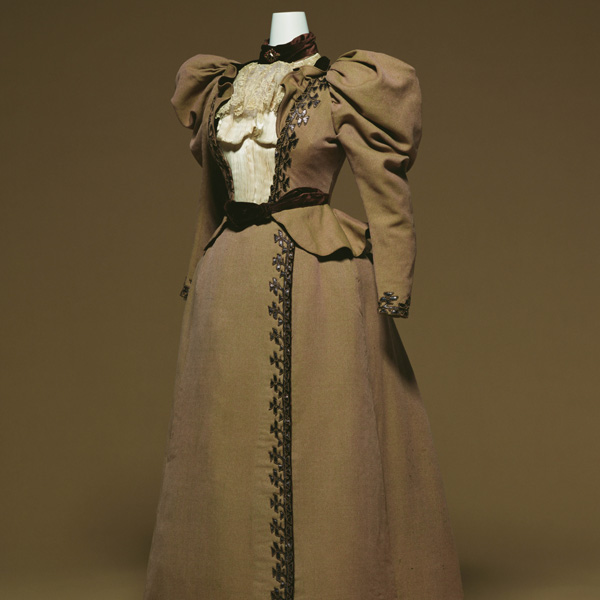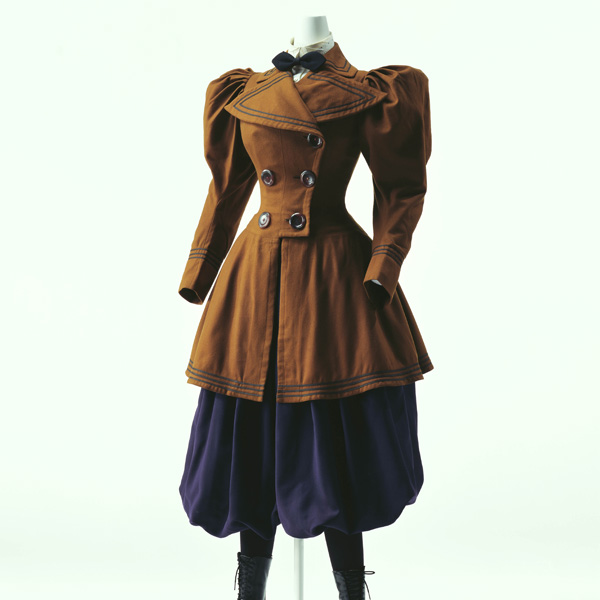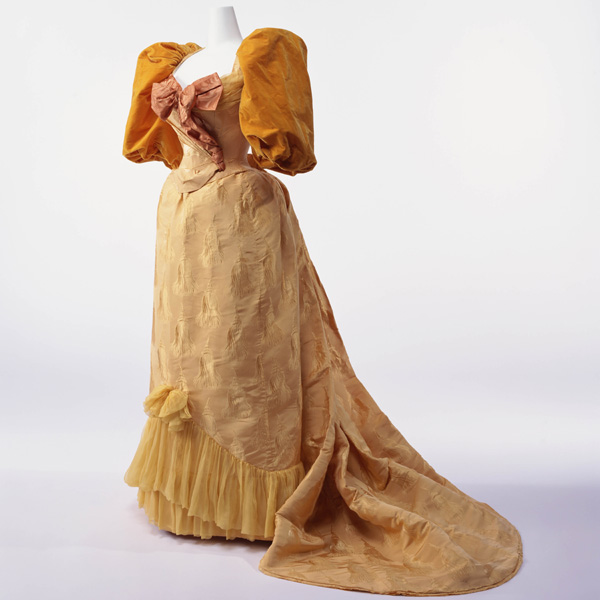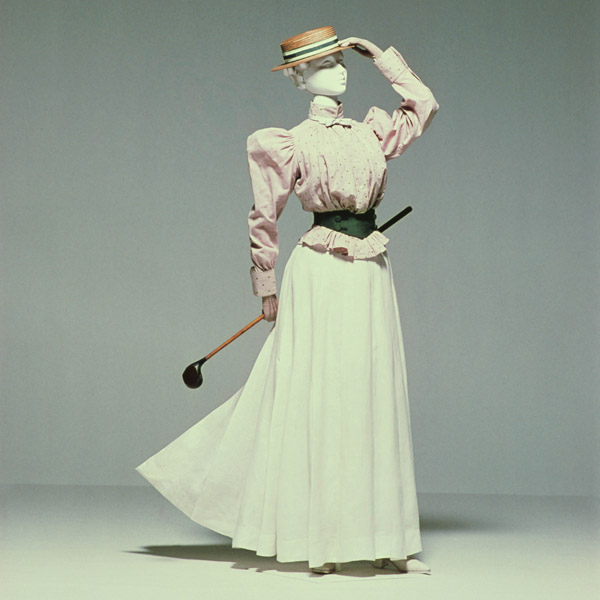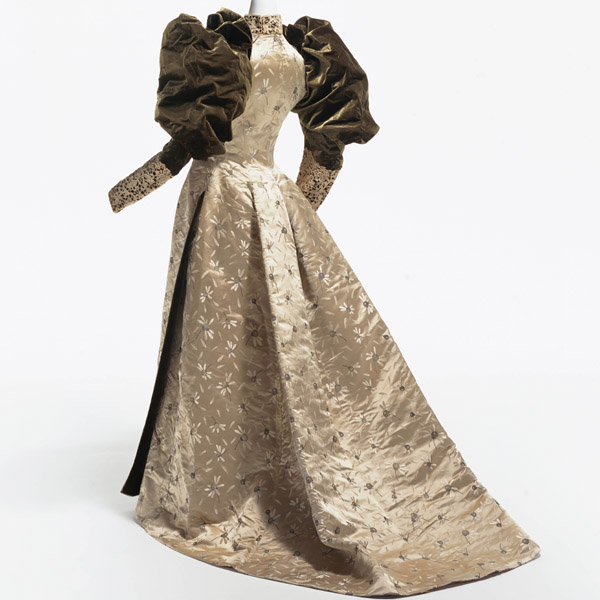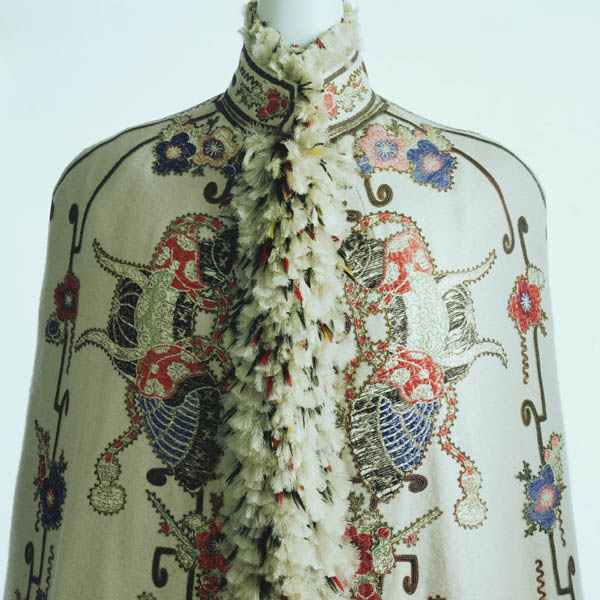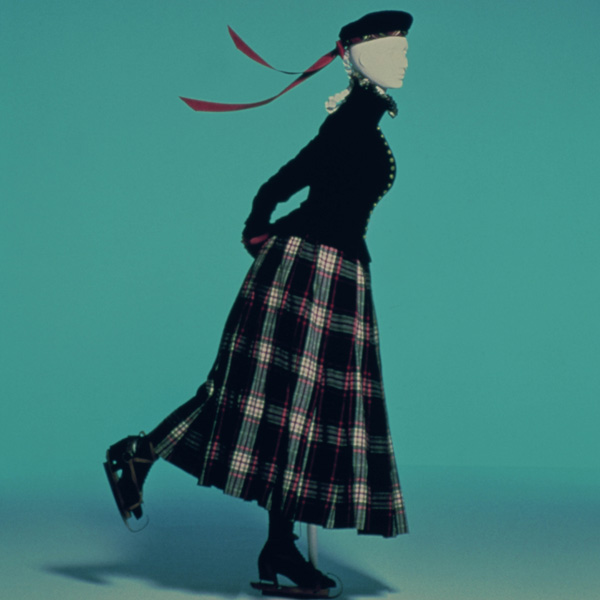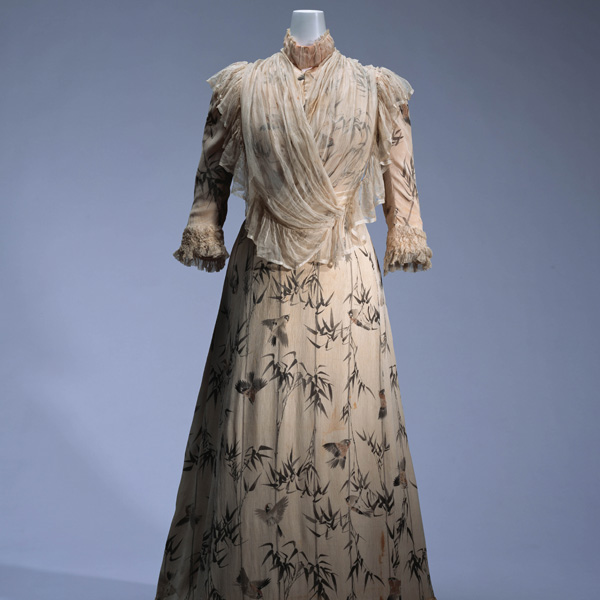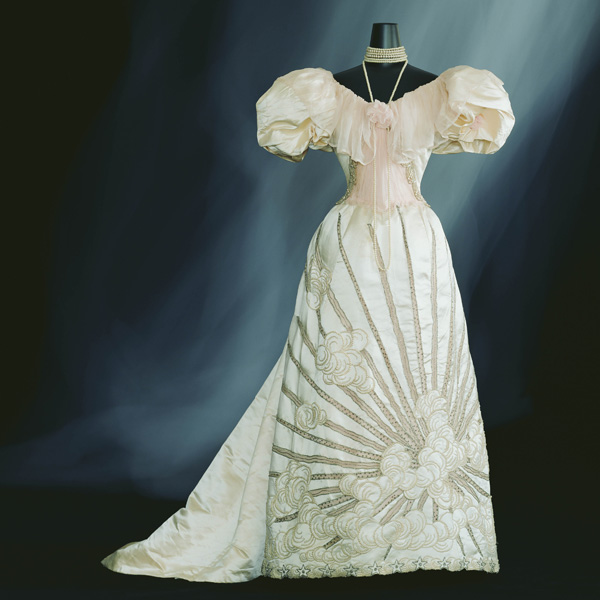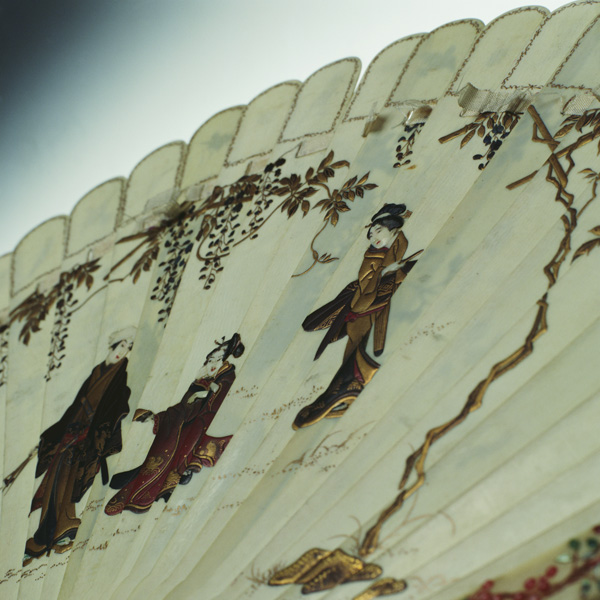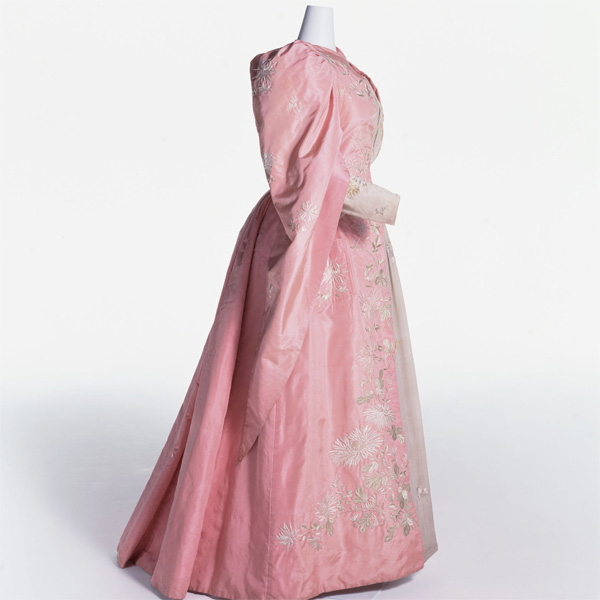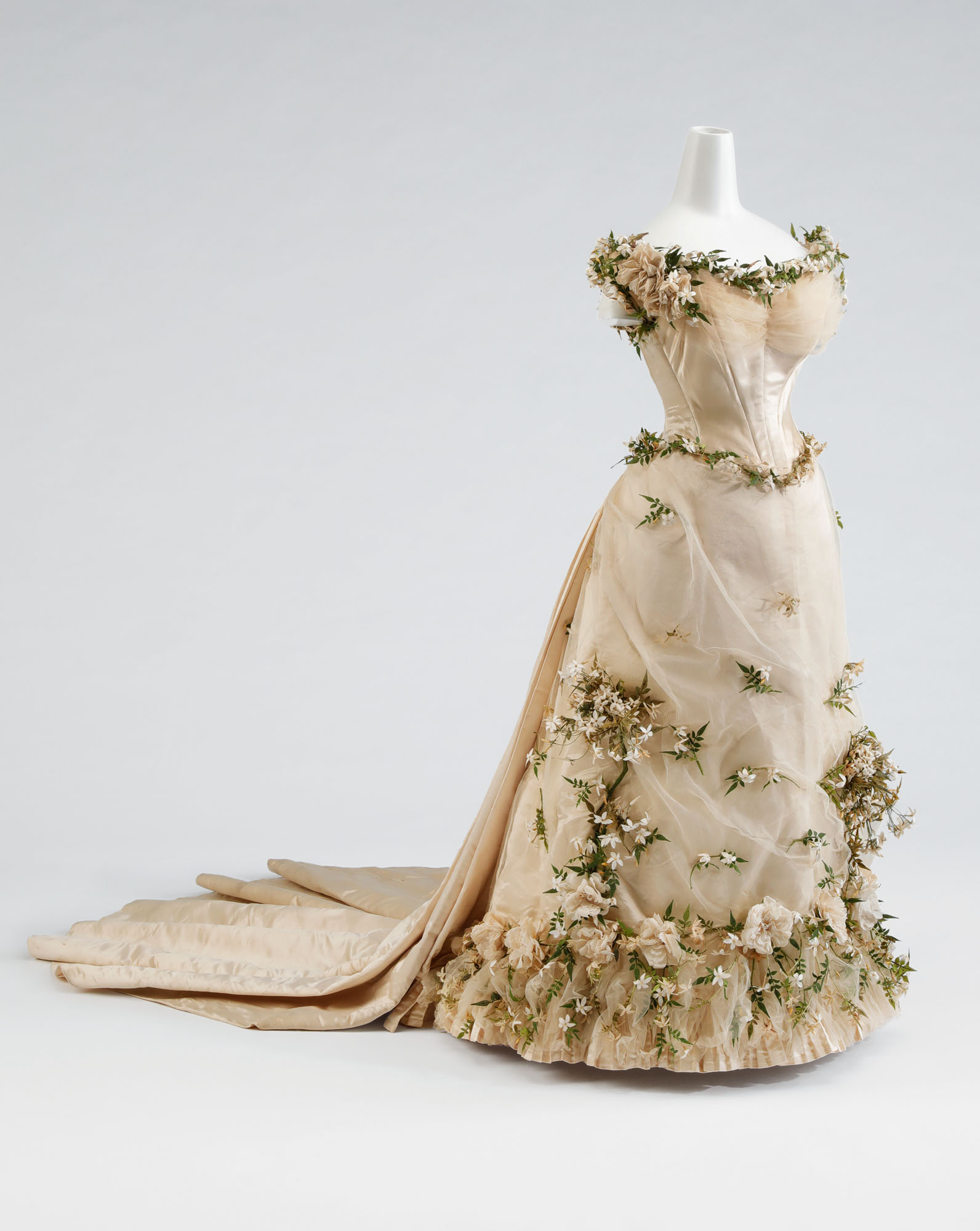
© The Kyoto Costume Institute, photo by Takeru Koroda
You can enlarge by putting the mouse cursor on the image.
Dress (Presentation Dress)
c. 1890 - Unknown (Country)
- Brand
- Elise
- Label
- BY SPECIAL APPOINTMENT “DRESS MEKERS” TO H.R.H. THE “PRINCESS OF WALES” Elise Ld. 170 REGENT ST. LONDON
- Material
- Set of bodice and skirt of white silk satin, covered with silk tulle and trimmed with artificial flowers.
- Inventory Number(s)
- AC2389 79-21-1AB
White silk satin is covered with tulle that has been decorated with artificial roses and jasmine. Two types of fabric—waxed cloth and unwaxed cloth—have been used to create the vibrant and three-dimensional flowers.
The history of artificial flowers can be traced back to ancient times. The dresses worn by French aristocratic women during the 18th century are well known for featuring artificial flowers. It was a time when a profusion of decorations was regarded as essential in women’s fashion, and this, combined with the popularity of the language of flowers in 19th century England, resulted in the evolution of artificial flowers.
Elise was the dressmaker charged with creating a wedding gown for Princess Alexandra who married Albert Edward, Prince of Wales (later King Edward VII) in 1863, and subsequently granted a royal warrant as a dressmaker. This garment was created for an invitee to an official event held by the British Royal Family. On the day, a 361.5cm long silver lamé train that descended from the shoulders was also worn with this dress.
 Digital Archives
Digital Archives